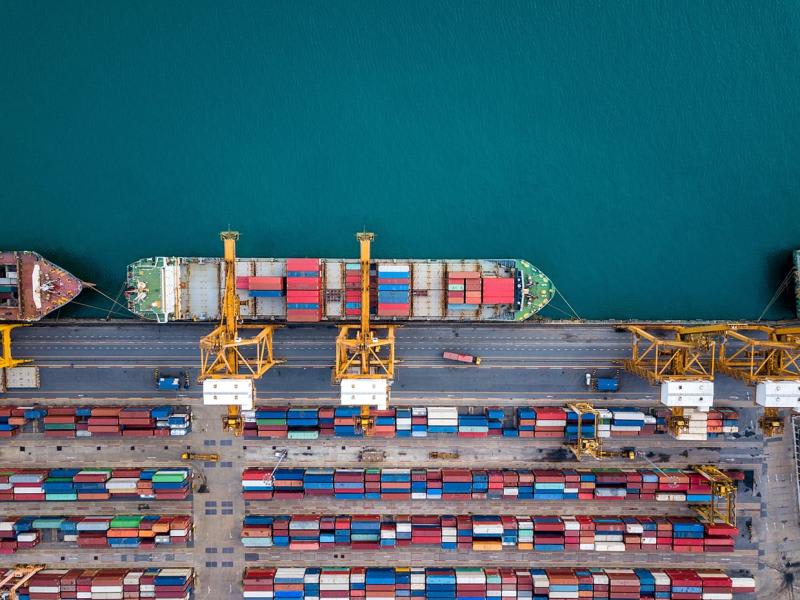Plastic pollution has emerged as one of our time’s most pressing environmental challenges, threatening ecosystems, marine life, and human health. In 2021 alone, an estimated 390.7 million metric tonnes of plastic was produced, and production is projected to triple by 2050. According to the United Nations, more than eight million tonnes of plastic end up in our oceans every year, causing severe damage to the environment, wildlife, and humans. There are five ‘plastic islands’ floating around the world’s oceans. To put the scale of these islands into perspective, the largest and most famous of them is the Great Pacific Garbage Patch, which reportedly covers 1.6 million square kilometres; a landfill in our ocean that is almost 4.5 times the size of Germany. A paradigm shift is needed, and innovation is the key. The traditional linear economy model of consumption is characterised by resource extraction, manufacturing products from those resources, then disposing those products once used; a ‘take-make-waste’ model. One innovative way to address the plastic problem is to reimagine our approach to resource consumption and waste management through the circular economy model.
A circular economy aims to remove financial incentives from depleting the Earth's resources and environmental degradation. Unlike the traditional linear model, this regenerative system emphasises the continual use, reuse, and recycling of materials. By prioritising durability, repairability, and recycling-friendly designs, the circular economy minimises waste generation and creates a closed-loop system where resources are perpetually cycled back into the production process. The circular economy demands innovation and could prove to be a powerful solution for reducing the use of plastics and creating a more resilient and resource-efficient society. In addition, according to the Ellen MacArthur Foundation, “By 2040, a circular economy has the potential to:
- Reduce the annual volume of plastics entering our oceans by 80%
- Reduce greenhouse gas emissions by 25%
- Generate savings of USD 200 bn per year
- Create 700,000 net additional jobs.”
Rethinking plastic production and design
At the heart of the circular economy lies the concept of designing out waste and pollution from the outset. Many of the single-use plastic products that we use on a daily basis take a worryingly long time to decompose. Plastic bottles, for example, are universally used but take an estimated 450 years to decompose, coffee pods and toothbrushes reportedly take 500 years. By adopting innovative design principles, such as eco-design and biomimicry, plastics can be developed with durability, recyclability, and reusability in mind. This approach enables products to retain their value and utility throughout their lifecycle, reducing the need for single-use plastics and promoting a circular flow of materials. Intropic Materials, a US-based company, has created a potential solution to the lack of biodegradability of plastic by embedding enzymes into the plastics that can aid and speed up natural decomposition. The process aims to break plastics down into chemically recyclable or biodegradable molecules that could then contribute back to the circular economy and reduce plastic pollution through a more sustainable and innovative manufacturing process.
Apeel, another US-based company, developed an innovative solution to replace single-use plastic wraps that keep fruit and vegetables fresh without sacrificing the longevity of the produce’s freshness. By creating an edible, plant-based coating that imitates the usual plastic shrink wrap by slowing down spoilage caused by water loss and oxidation, the product has the potential to change the way that fruit and vegetables are packaged in an innovative and sustainable way.
A new era in recycling
Recycling has become a household concept with regard to plastic waste. Yet, while recycling is vital, a report concluded that only 9% of all the plastic waste that has ever been generated has been recycled. To achieve a circular economy for plastics, a robust and efficient recycling infrastructure is vital - this involves investing in advanced sorting technologies, improving collection and separation processes, and fostering collaboration between stakeholders in waste management. Through effective recycling, plastic waste can be transformed into valuable resources, such as energy, which can be applied elsewhere.
Hydrogen Utopia, a start-up company based in the UK, created a method of turning unrecyclable plastic waste into usable hydrogen and synthesis gas (syngas) products, essentially providing alternative energy sources from unusable waste. Not only does this create a more environmentally friendly approach to gas extraction, but it also uses plastic waste as a resource itself. Whilst hydrogen gas is not commonly used as a fuel currently, the opportunities it presents for the future of energy are limitless, and it has excellent potential for use in the years to come.
Righting the wrong
Whilst introducing a circular economy could vastly reduce the amount of plastic waste produced worldwide, there is still work to be done with the garbage already made. As previously mentioned, some plastic products can have a lifetime of 500 years before they decompose (which is harmful to the environment itself), so it is crucial that humanity cleans up after itself.
The Ocean Cleanup was founded by Dutch inventor Boyan Slat at 18 and is a leading non-profit foundation in innovative ocean cleaning technology. Their current clean-up system, dubbed ‘System 002’ (which is currently transitioning to System 03), uses a long net stretched between two boats that slowly move (as not to damage wildlife) through garbage ‘hotspots’ in the ocean – particularly around the Great Pacific Garbage Patch mentioned earlier. Innovative computational modelling allows the organisation to predict where the hotspots will form and then deploy their systems in those areas. The net has a ‘retention zone’ in the middle, where the plastic waste is funnelled, collected, and then transferred into containers on board the boats. Once the containers have been filled, the plastic is returned to land for recycling. The Ocean Cleanup plans to create durable products from the waste collected, turning harmful pollution into valuable resources that flow back into the economy. All proceeds go to further cleaning the ocean, and they aim to keep going until our oceans are clean.
The Ocean Cleanup has also created a family of ‘Interceptor’ technology solutions that focus on cleaning up rivers around the world. The Interceptor Original is a 100% solar-powered, autonomous plastic extractor that is strategically placed on a river to collect all of the passing waste for recycling. A barrier channels the river waste onto a conveyor belt that pulls the debris from the water and into a shuttle that automatically distributes the waste equally across several dumpsters using sensor data. Once the dumpsters are full, the Interceptor notifies the local operators via text message, who then come to remove the waste for recycling. These incredible, innovative solutions are the products of the future, pulled straight from science fiction novels. Yet, they exist today and are vital to both the circular economy and the health of our planet.
A new path
Plastic waste has infiltrated every corner of our planet, and whilst the damage is mounting, it is still not too late. A circular economy allows businesses and people worldwide to apply their insight and critical thinking capabilities to innovate towards value-added change. By embracing the ideas of a circular economy, we can rewrite the narrative and pave the way towards a more resource-efficient and resilient society and, consequently, a more sustainable future. The circular economy is not just a concept; it is a powerful solution that offers hope for a world where plastics are managed responsibly, waste is minimised, and the environment thrives. With many innovative solutions currently underway, and the exciting prospects born from the Global Plastic Innovation Network, the future is looking a little less plastic, and a little more sustainable.




